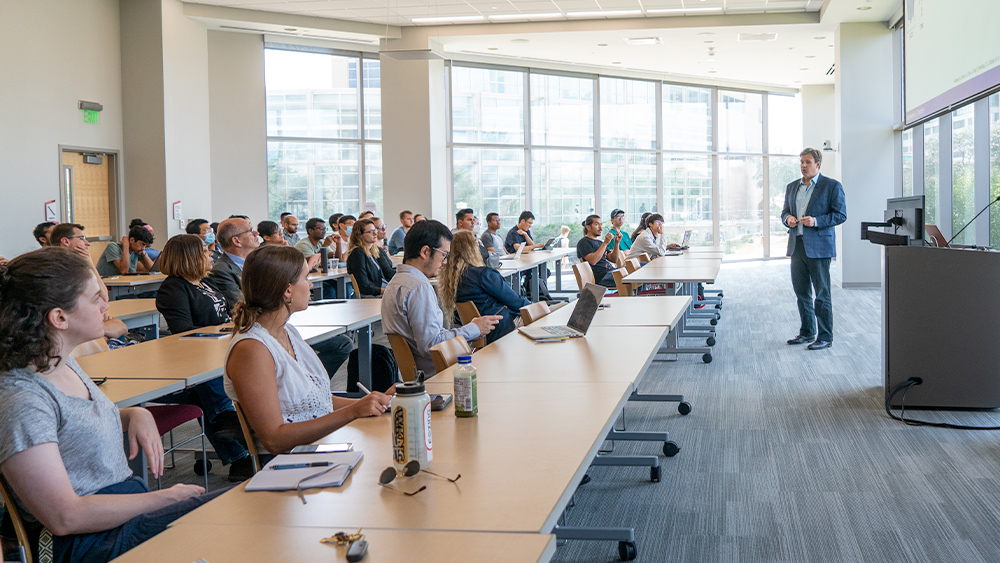
Ten years after it was established, the Department of Materials Science and Engineering at Texas A&M University is admiring the growth of its enrollment and funding.
Materials science and engineering began with a total of 90 students in the first year and has now increased to over 400. Each year, the department continues to grow steadily, with the largest influx between 2017 and 2018, which saw a 38.7% increase.
“That’s a pretty significant growth in terms of the number of students,” said Dr. Miladin Radovic, materials science and engineering professor and director of the Materials Characterization Facility. “It has been a steady growth. My first undergraduate course had about 40 (students); now I’m getting 60s and 70s.”
There were about 200 undergraduate students in the fall of 2022, with 206 graduate students — 51 masters and 155 doctoral students.
“There is an increasing demand for engineering degrees in the state of Texas and nationwide. Because of the steady population growth and expansion of industry presence in Texas, more students are trying to enroll at Texas A&M and especially in the College of Engineering. To keep up with the demand, we steadily increase undergraduate enrollment in the department, 10% to 15% every year. Yet, our student quality keeps getting better,” said Dr. Ibrahim Karaman, department head.
Female representation in the department has also seen a jump from 20 students in 2013 to 135 in 2022, according to the data.
“It's great to see more women pursuing degrees in material science and engineering. I think it's a fantastic major for anyone,” said Dr. Emily Pentzer, an associate professor in the materials science and engineering department. The field offers many opportunities to improve the world around us. The desire to make the world a better place attracts many talented students to the field, including women.”
Despite being a relatively young department, Karaman said students have easily found jobs with all three-degree levels, bachelor’s, masters and doctoral.
“We have seen a tremendous increase in the demand for materials science and engineering degrees after the pandemic,” Karaman said. “Due to the multidisciplinary nature of materials science, our students are somewhat immune to the cycles in the job market for different industry sectors. If one sector does not do well — for example, the energy sector — then our students find jobs in emerging sectors such as microelectronics, the semiconductor industry and additive manufacturing. Therefore, the job placement rate by the time of graduation has been amazing for our students.”
Alan Martinez, a materials science and engineering graduate student, agrees that job opportunities are out there and participating in conferences for networking increases those chances.
“There are a lot of the conferences we attend for materials science, so it's easy to network with other materials scientists for job opportunities that align with what students are looking for in the future,” Martinez said.
Additionally, the department assigns faculty and industry members to mentor each student, which has been highlighted as one of the strengths of the department in the recent accreditation visit.
“Our students have an industry mentor and a faculty mentor they meet with at least once a semester or more to help them find internships or jobs,” Karaman said.
In the next few years, Karaman would like to see the research funding increase and continue the 6% to 7% increase it has seen in the past five years. Radovic has the same goal for the department, as well as having it become a top U.S. News and World Report-ranked department.
Currently, the department is ranked 11th in undergraduate programs and 17th in graduate programs among public institutions.
“It's getting more and more difficult to be ranked within the top 10 among public institutions,” Radovic said. “But I am very optimistic, and I believe we will achieve that goal very soon based on our steep upward trajectory in the last couple of years. That would be really good for undergraduate and graduate students and their placement industry, government and academia.”